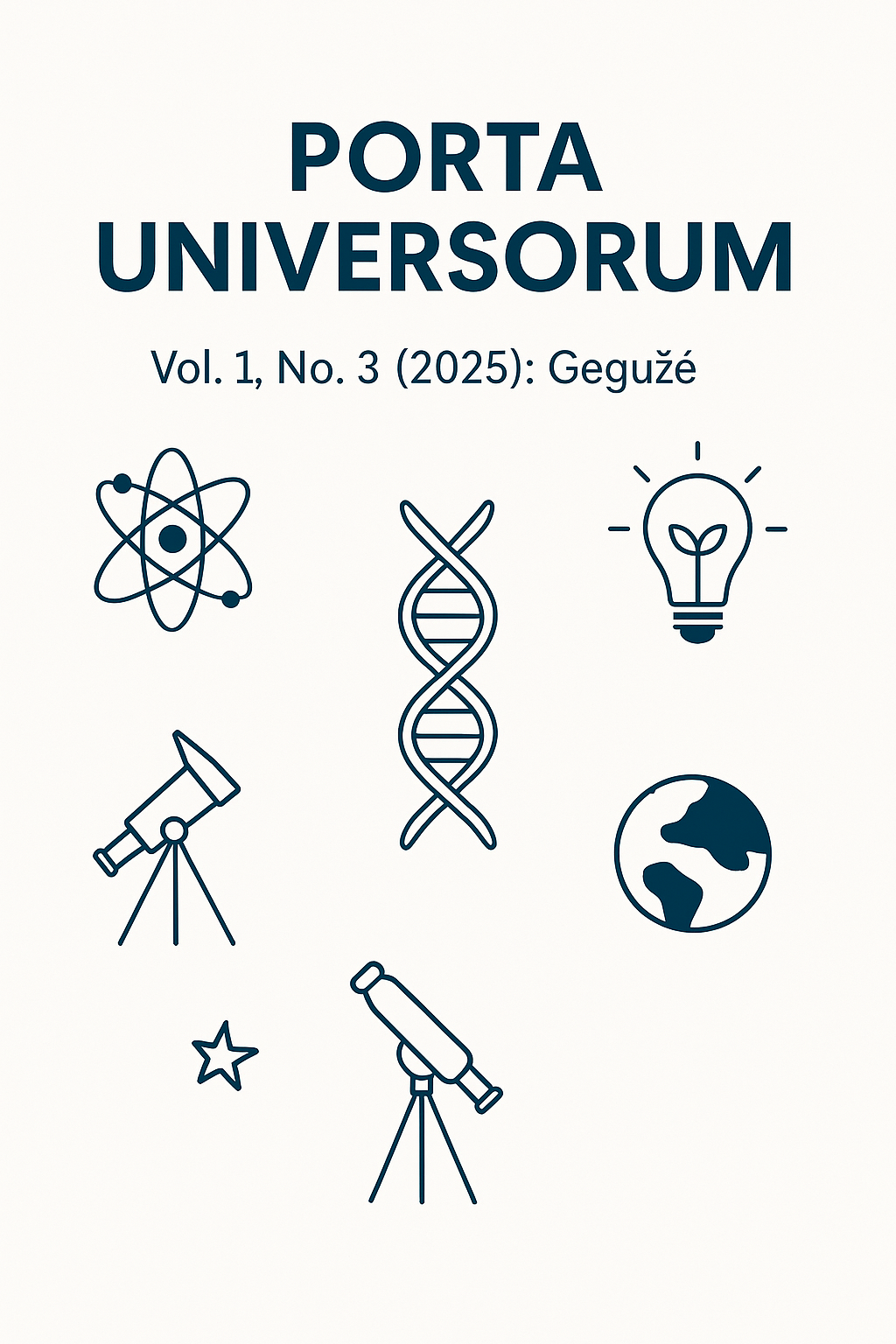Slowing Global Growth and Rising Recession Risks: Causes, Consequences, and Policy Responses
##semicolon##
https://doi.org/10.69760/portuni.010319##semicolon##
Global growth slowdown##common.commaListSeparator## recession risk##common.commaListSeparator## monetary policy##common.commaListSeparator## fiscal policy##common.commaListSeparator## inflation##common.commaListSeparator## supply shocksSantrauka
Global economic growth has decelerated significantly in recent years, raising the risk of worldwide recession. This article examines the causes of the global growth slowdown – including pandemic aftershocks, supply chain disruptions, surging inflation, rising interest rates, energy price shocks, and labor market shifts – and analyzes the short-term and long-term consequences. Macroeconomic indicators show a post-pandemic rebound giving way to modest growth well below historical norms, with global GDP expected to expand by only around 2.5–3% in the mid-2020s. At the same time, many economies face the highest inflation in decades, prompting synchronous monetary tightening that risks triggering recessions. We discuss how these dynamics impact employment, investment, and debt sustainability, and we evaluate policy responses. Fiscal and monetary authorities worldwide confront a delicate balance between taming inflation and sustaining growth. In the short run, prudent interest rate policies and targeted fiscal support are needed to curb inflation and cushion vulnerable sectors. In the longer term, structural reforms are essential to reinvigorate productivity, diversify supply chains, and ensure energy and climate security. Enhanced global coordination is also vital to mitigate trade tensions and financial risks. Our findings underscore that without strategic policy action, the global economy may settle into a pattern of sluggish growth that undermines development goals. Conversely, decisive policy responses – from investment in productive capacity to international cooperation – can help reduce recession risks and put global growth on a more robust, sustainable path.
##submission.citations##
International Monetary Fund (2023). World Economic Outlook, October 2023: Navigating Global Divergences. IMF Publications. (Global growth and inflation forecasts).
World Bank (2022). Risk of Global Recession in 2023 Rises Amid Simultaneous Rate Hikes (Press Release, Sept. 15, 2022). World Bank Study highlighting synchronized tightening and recession risk.
World Bank (2023). Falling Long-Term Growth Prospects: Trends, Expectations, and Policies. World Bank Publications. (Analysis of structural growth slowdown).
Reuters (2022). “Global central banks deliver historic rate hike blast in 2022.” December 23, 2022. (Details on interest rate increases by major central banks).
Verick, S., & Islam, I. (2010). The great recession of 2008-2009: causes, consequences and policy responses (No. 4934). IZA Discussion Papers.
Sakbani, M. (2010). The global recession: Analysis, evaluation, and implications of the policy response and some reform proposals. Studies in Economics and Finance, 27(2), 91-109.
Tyers, R. (2016). Slower Growth and Vulnerability to Recession: Updating China's Global Impact. Scottish Journal of Political Economy, 63(1), 66-88.
Seguino, S. (2010). The global economic crisis, its gender and ethnic implications, and policy responses. Gender & Development, 18(2), 179-199.
Sarkar, M. (2009). Financial crises and economic recession. Vikalpa, 34(3), 117-130.
Hilbers, P., Otker-Robe, I., Pazarbasioglu, C., & Johnsen, G. (2005). Assessing and managing rapid credit growth and the role of supervisory and prudential policies.
Reuters (2022). “IMF warns of slowing growth, rising market risks…” October 11, 2022. (IMF outlook with recession warnings, inflation forecasts, and policy advice).
International Labour Organization (2024). World Employment and Social Outlook 2024. ILO (Global unemployment and labor productivity trends).
OECD (2023). OECD Economic Outlook, Interim Report September 2023. OECD Publishing. (Noting resilience due to lower energy prices and improved supply conditions).
Federal Reserve Bank of San Francisco (2023). Economic Letter: “Global Supply Chain Pressures and U.S. Inflation.” (Evidence that supply shocks raise inflation and unemployment).
UNCTAD (2024). Trade and Development Report 2024 (Press release). (Global growth forecasts 2024 and need for structural reforms).
Dieppe, A., Gilhooly, R., Han, J., Korhonen, I., & Lodge, D. (2018). The transition of China to sustainable growth: Implications for the global economy and the euro area (No. 206). ECB Occasional Paper.
Heutel, G. (2012). How should environmental policy respond to business cycles? Optimal policy under persistent productivity shocks. Review of Economic Dynamics, 15(2), 244-264.
Bina, O., & La Camera, F. (2011). Promise and shortcomings of a green turn in recent policy responses to the “double crisis”. Ecological Economics, 70(12), 2308-2316.
World Bank (2025). Global Economic Prospects January 2025 (Overview). World Bank. (Projection of 2.7% global growth in 2024–26 and need for policy action).
##submission.downloads##
Publikuota
Numeris
Skyrius
##submission.license##
##submission.copyrightStatement##
##submission.license.cc.by-nc4.footer##License Terms
All articles published in Porta Universorum are licensed under the Creative Commons Attribution–NonCommercial 4.0 International License (CC BY-NC 4.0). This license permits:
-
Sharing (copying and redistributing the material in any medium or format),
-
Adapting (remixing, transforming, and building upon the material),
-
for non-commercial purposes only,
-
with proper attribution to the original author(s) and source.
Commercial use of the material is not permitted without prior written permission from the publisher.




